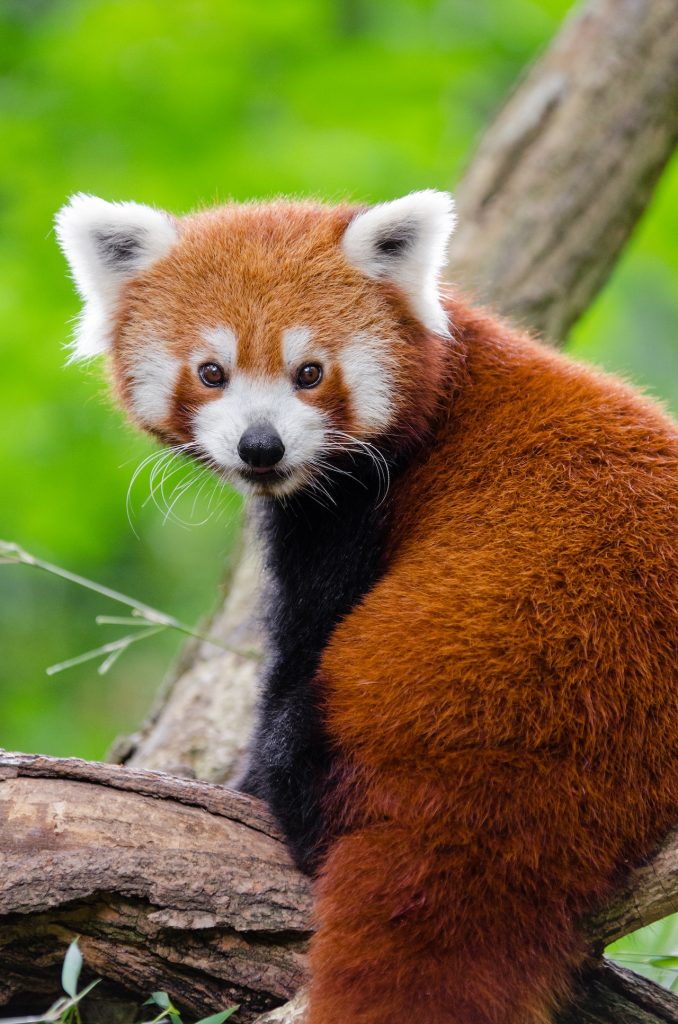Introduction
With its remarkable look and lovable personality, the red panda (Ailurus fulgens) captivates the hearts of nature lovers everywhere. The red panda, which may be found in the Eastern Himalayas and southwestern China, is a distinct and unusual species, despite frequently being mistaken for raccoons or bears. We explore the environment it lives in as we set out on a quest to comprehend this mysterious creature.
lets Discover the enchanting world of the red panda as we delve into “What Habitat Does a Red Panda Live In.” From dense temperate forests to high-altitude landscapes, these endearing creatures thrive in a delicate balance of nature’s wonders. Uncover their unique adaptations and the conservation efforts aimed at preserving their precious home.
The Red Panda: An Endearing Species

The Eastern Himalayas and southwest China are home to the red panda, a little mammal. They are distinct from both raccoons and bears since they are members of the family Ailuridae. Red pandas are unquestionably alluring, with their reddish-brown coat, stunning facial features, and long, bushy tail. Since they spend much of their time in trees, they are mostly arboreal. Red pandas are also solitary creatures, and although their areas sometimes overlap, they rarely interact.
Geographic Range of Red Pandas
The red panda’s natural habitat spans a relatively limited area, primarily found in the countries of:
- China (provinces of Sichuan, Yunnan, and Tibet)
- Nepal
- Bhutan
- India (in the states of Sikkim, West Bengal, and Arunachal Pradesh)

What Habitat Does a Red Panda Live In : The Red Panda's Preferred Habitat
Red pandas are highly adaptive creatures, inhabiting a diverse range of elevations. While they can be found at elevations from 2,200 to 4,800 meters (7,200 to 15,700 feet), their preferred range lies between 2,200 to 4,000 meters (7,200 to 13,100 feet) above sea level.
Forests form the core of the red panda’s habitat. These include:
- Temperate Forests: Dense temperate forests with a mix of deciduous and evergreen trees.
- Subtropical Forests: Lower elevation forests characterized by lush vegetation.
Within these forests, red pandas seek areas with an abundant supply of their primary food source: bamboo. They particularly favor bamboo species such as the Himalayan Blue Pine (Pinus wallichiana), the Himalayan Yellow Poplar (Populus ciliata), and the Arundinaria spp.
What Habitat Does a Red Panda Live In : Flora and Fauna of the Red Panda's Habitat
The red panda’s diet is predominantly herbivorous, primarily consisting of bamboo leaves and shoots. However, they also consume a variety of other plant material, including fruits, berries, acorns, and occasionally insects and small vertebrates. Some of the flora they encounter in their habitat includes:
- Various species of bamboo (Arundinaria spp., Fargesia spp., Sinarundinaria spp., etc.)
- Himalayan blue pine (Pinus wallichiana)
- Himalayan yellow poplar (Populus ciliata)
- Oak (Quercus spp.)
- Maple (Acer spp.)
The red panda shares its habitat with various other fauna, such as:
| Fauna | Description |
|---|---|
| Himalayan Black Bear | Another native mammal species, sharing a similar range in the Himalayas. |
| Himalayan Monal | A colorful and beautiful bird found in the region. |
| Himalayan Marmot | A small rodent-like mammal that is often seen in mountainous regions. |
Red pandas have developed a variety of distinctive physical and behavioral adaptations over time to survive in their demanding habitat:
A) Physical Adaptations: To combat the chilly alpine climate, red pandas have thick, woolly fur. Their bushy tails act as a blanket when they’re at rest and a balance aid when they’re scaling trees.
B) Behavioral adaptations: Red pandas conserve energy because of their slow metabolic rates and preference for low-calorie foods like bamboo. They are adept climbers, and their muscular limbs and claws let them move through the woods with ease.
What Habitat Does a Red Panda Live In : Human Impact on Red Panda Habitats
Sadly, human activities pose significant hazards to the red panda’s habitat. These consist of:
A) Deforestation: The destruction of forests for logging, development, and agriculture has resulted in a considerable loss of red panda habitat.
B) Habitat Fragmentation: The habitat of the red panda is divided by human infrastructure, such as highways and dams, isolating populations and restricting gene flow.
C) Climate Change: As temperatures rise, bamboo’s growth patterns change, which has an effect on the red panda’s main food source.
D) Human Interaction: Poaching for the illicit pet trade and encroachment into red panda habitats put this already-vulnerable species in risk.
What Habitat Does a Red Panda Live In: Conservation Efforts

Numerous government agencies and conservation groups have started a number of initiatives in an effort to preserve red panda habitats, including:
Creating national parks and reserves to protect important habitats is option A. Protected Areas and Reserves.
B) Community-based conservation initiatives: Including local groups in conservation campaigns to encourage cohabitation and sustainable lifestyles.
What Habitat Does a Red Panda Live In : Case Studies of Successful Conservation
-
Singalila National Park, India: Singalila National Park, located in the Indian state of West Bengal, is known for its robust red panda conservation program. Through strict protection measures and community involvement, the park has witnessed an increase in red panda populations over the years.
-
Red Panda Network, Nepal: This non-profit organization has been actively working towards protecting red pandas in Nepal. Their community-based initiatives have led to a decline in deforestation and poaching in red panda habitats.
FAQs: What Habitat Does a Red Panda Live In
1. What is the red panda’s scientific name?
- The red panda’s scientific name is Ailurus fulgens.
2. How high up do red pandas live in the mountains?
- Red pandas inhabit elevations ranging from 2,200 to 4,800 meters (7,200 to 15,700 feet) above sea level.
3. Do red pandas hibernate in winter?
- Red pandas do not hibernate; they remain active throughout the year.
4. What threats do red pandas face in their habitat?
- Red pandas face threats such as deforestation, habitat fragmentation, climate change, and human interaction.
5. How can I help support red panda conservation?
- Supporting reputable conservation organizations, raising awareness, and making sustainable choices are ways to contribute to red panda conservation.
Conclusion
It is nevertheless enthralling to discover the fascinating red panda world and its habitat. Understanding their habitat is increasingly important as we work to protect this amazing species and its priceless ecosystem. By working together, we can make sure that the red panda roams the mountains with grace and wonder, leaving a permanent imprint on the natural world.



